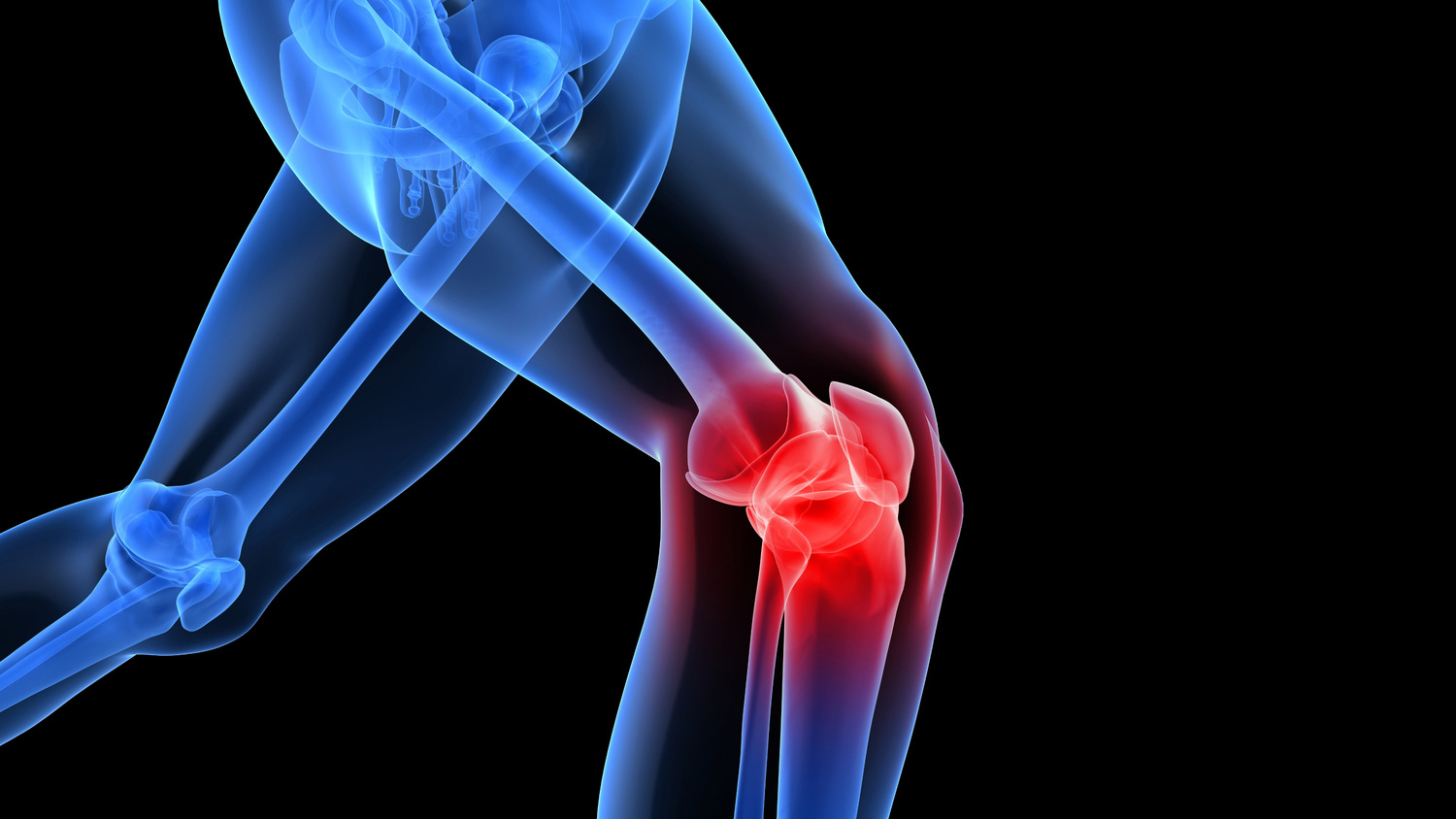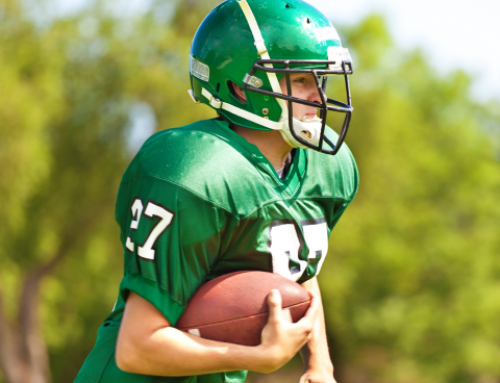5 Simple Knee Injury Prevention Exercises
It’s easy to take your knees for granted. They support your entire body and allow you to take thousands of steps every day. For athletes, they withstand the stress of sprinting, jumping and changing direction. (Learn more about the knee and how it’s injured.)
Yes, the knees are designed to remain stable and healthy. However, as with any other part of the body, things can go wrong. One wrong step or ill-fated twist, and you will quickly be on crutches wondering what went wrong with your joint. Read on to learn why that happens, and how to prevent it.
Knee Anatomy

The knee depends on the ACL, PCL, MLC and LCL ligaments to hold it together. They support the knee from front-to-back and side-to-side. Surrounding muscles and their tendons, including the quads, hamstrings and calves, provide additional support.
Causes of Knee Injuries
Many knee injuries occur because of imbalances, weakness or instability in other areas of the body. For example, if you lack glute strength, your knee may be more susceptible to collapsing inward, which puts stress on your ACL. Or, if you lack ankle stability, the lack of control make cause instability migrate up to your knee. (Read Knee Injury Types, Causes, Treatment and Prevention.)
Two types of knee injuries can occur: contact and non-contact. Contact injuries for the most part cannot be avoided. For example, there’s nothing you can do if someone happens to roll into the side of your leg. However, many knee injuries occur from simply landing from a jump, decelerating or changing direction. These can be prevented.
Knee Injury Prevention
Knee injuries can be devastating—and even career ending—especially if the ACL is involved. “Once torn, an ACL requires a more aggressive treatment due to the fact that an ACL doesn’t tighten and heal the way the other ligaments do,” says Edward Laskowski, MD, co-director of the Mayo Clinic Sports Medicine Center. (Try these ACL prevention exercises.)
Injuries can take up to nine months to recover from because they need time to heal; and you need to restore mobility and function, rebuild muscle tissue and restore coordination. Needless to say, the process can be arduous. Worse, returning to play can take even longer mentally because you must have confidence that you won’t reinjure your joint.
However, not all the news is bad. There are many knee injury prevention exercises. The following five exercises are frequently used in the rehab setting, but they can also be used to fortify the knee joint by improving its strength, stability and mobility—or to help restore strength after you have completed physical therapy.
Leg Press: This exercise builds quad strength with no impact and little stress on the joint. You can work your legs together or separately for an additional challenge.
Sets/Reps: 2×10-12
Physioball Hamstring Curl: If you’re going to strengthen your quads, you need to strengthen your hamstrings to prevent an imbalance.
Sets/Reps: 2×12

Single-Leg Stance: It may seem simple, but this balance exercise improves knee stabilizer strength and balance. All you need to do is stand on one leg. For an additional challenge, rotate your body slowly to your left and right.
Sets/Duration: 2×30-60 seconds
Note: this drill can be repeated throughout the day up to three times.
Heel Raises: To finish building strength around your knee, work your calves with heel raises. Find a box or a stair and stand with your heels hanging off. Then pump your feet up and hold for one second before lowering.
Sets/Reps: 2×10-12
Calf Stretch: Place one foot in front of the other with your hands against a wall and bend your knees. You will feel a stretch in the back of your lower legs. Switch leg positions after each set.
Sets/Duration: 2-3×15-20 seconds each leg
Note: do this at the end of a workout
Hamstring Stretch: Place one foot on a waist-high stationary object like a chair and slowly lean forward to feel a stretch in your hamstring. Keep your back straight to avoid injury.
Sets/Duration: 2×15-20 seconds each leg
RECOMMENDED FOR YOU
MOST POPULAR
5 Simple Knee Injury Prevention Exercises
It’s easy to take your knees for granted. They support your entire body and allow you to take thousands of steps every day. For athletes, they withstand the stress of sprinting, jumping and changing direction. (Learn more about the knee and how it’s injured.)
Yes, the knees are designed to remain stable and healthy. However, as with any other part of the body, things can go wrong. One wrong step or ill-fated twist, and you will quickly be on crutches wondering what went wrong with your joint. Read on to learn why that happens, and how to prevent it.
Knee Anatomy

The knee depends on the ACL, PCL, MLC and LCL ligaments to hold it together. They support the knee from front-to-back and side-to-side. Surrounding muscles and their tendons, including the quads, hamstrings and calves, provide additional support.
Causes of Knee Injuries
Many knee injuries occur because of imbalances, weakness or instability in other areas of the body. For example, if you lack glute strength, your knee may be more susceptible to collapsing inward, which puts stress on your ACL. Or, if you lack ankle stability, the lack of control make cause instability migrate up to your knee. (Read Knee Injury Types, Causes, Treatment and Prevention.)
Two types of knee injuries can occur: contact and non-contact. Contact injuries for the most part cannot be avoided. For example, there’s nothing you can do if someone happens to roll into the side of your leg. However, many knee injuries occur from simply landing from a jump, decelerating or changing direction. These can be prevented.
Knee Injury Prevention
Knee injuries can be devastating—and even career ending—especially if the ACL is involved. “Once torn, an ACL requires a more aggressive treatment due to the fact that an ACL doesn’t tighten and heal the way the other ligaments do,” says Edward Laskowski, MD, co-director of the Mayo Clinic Sports Medicine Center. (Try these ACL prevention exercises.)
Injuries can take up to nine months to recover from because they need time to heal; and you need to restore mobility and function, rebuild muscle tissue and restore coordination. Needless to say, the process can be arduous. Worse, returning to play can take even longer mentally because you must have confidence that you won’t reinjure your joint.
However, not all the news is bad. There are many knee injury prevention exercises. The following five exercises are frequently used in the rehab setting, but they can also be used to fortify the knee joint by improving its strength, stability and mobility—or to help restore strength after you have completed physical therapy.
Leg Press: This exercise builds quad strength with no impact and little stress on the joint. You can work your legs together or separately for an additional challenge.
Sets/Reps: 2×10-12
Physioball Hamstring Curl: If you’re going to strengthen your quads, you need to strengthen your hamstrings to prevent an imbalance.
Sets/Reps: 2×12

Single-Leg Stance: It may seem simple, but this balance exercise improves knee stabilizer strength and balance. All you need to do is stand on one leg. For an additional challenge, rotate your body slowly to your left and right.
Sets/Duration: 2×30-60 seconds
Note: this drill can be repeated throughout the day up to three times.
Heel Raises: To finish building strength around your knee, work your calves with heel raises. Find a box or a stair and stand with your heels hanging off. Then pump your feet up and hold for one second before lowering.
Sets/Reps: 2×10-12
Calf Stretch: Place one foot in front of the other with your hands against a wall and bend your knees. You will feel a stretch in the back of your lower legs. Switch leg positions after each set.
Sets/Duration: 2-3×15-20 seconds each leg
Note: do this at the end of a workout
Hamstring Stretch: Place one foot on a waist-high stationary object like a chair and slowly lean forward to feel a stretch in your hamstring. Keep your back straight to avoid injury.
Sets/Duration: 2×15-20 seconds each leg













